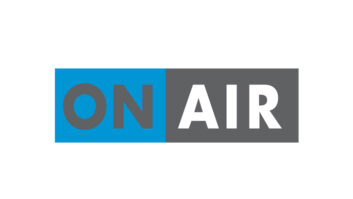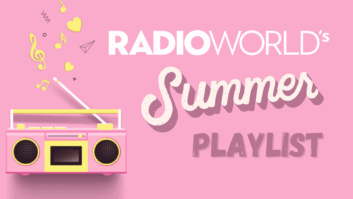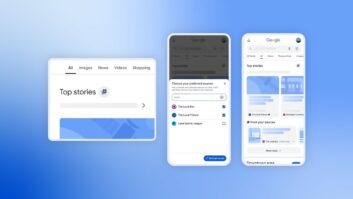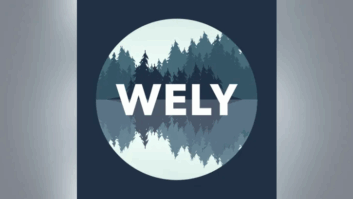
Google Play Music’s strategy is to leverage the cloud as the storage location for users’ music libraries. Pandora, Google Play Music and SoundCloud are among the biggest names in online music streaming. For radio broadcasters, such services are serious competitors for listeners. Yet these three streaming audio companies appear to follow very different operational models than conventional radio stations.
Is this really the case? Yes and no: Although these companies do not use radio’s staffing structure and control room/transmitter model, much of what they do is actually quite familiar to broadcasters once you get a handle on their approaches.
THE NITTY-GRITTY
Pandora was founded as Savage Beast Technologies in 2000 by Tim Westergren, Jon Kraft and Will Glaser. The trio initially had no plans to launch an online music service; they were focused on selling their Music Genome Project software to retailers music stores and other recorded audio retailers, to expose customers to new artists in-store and to boost sales.

Google Play Music combines online music storage for users with a music download store and a streaming audio service. The November 2000 news release that introduced Savage Beast to the world stated, “Tower Records (MTS Inc.) and Riffage, an Internet pioneer in digital music, represent two of Savage Beast’s charter partners. By integrating Savage Beast’s modular music discovery technology into their websites and Tower’s in-store kiosks, Savage Beast’s partners can develop a customized experience for music lovers.”
Unfortunately, the retail music business tanked in the years that followed — Tower Records filed for bankruptcy in 2004 — undercutting Savage Beat’s core market. The company morphed into Pandora in 2005 and launched its own music streaming business.
It was a wise decision.
“As of Q2 2015, Pandora had over 1,700 employees and nearly 80 million active monthly listeners listening more than 22 hours a month,” said Ron Nenni, its director of music programming. Pandora offers both free (ad-supported) and paid subscription (ad-free) music services, plus online music sales.
But Pandora has plenty of competition itself these days.
Google Play Music was launched by Google in late 2011. “It is the only service of its kind that lets you store your entire music collection online for free, with a subscription service that gives you access to 35 million songs, a store to purchase music you want to own forever and a free radio service to try us out,” said Matt McLernon, Google Play+/YouTube Communications Manager.
Google launched its music service to capitalize on cloud-based media, media stored on other people’s computers and sourced by users via the Web.
“Early on we saw that music listening (and media generally) was moving to the cloud,” said McLernon. “After launching at Google I/O a few years ago, launching a free locker service that now can store up to 50k of your own songs and launching our subscription service two years ago, we’ve been aggressively investing and growing this service to reach fans in 60 countries around the world.”


Meanwhile, SoundCloud, launched in Berlin in 2008 by Alex Ljung and Eric Wahlforss, is designed to gives its users access to the world’s largest community of music and audio creators.
“SoundCloud allows everyone to discover original music and audio, connect with each other and share their sounds with the world,” said Megan West, SoundCloud’s director of content relations. “In addition, creators can use the platform to instantly upload and share sounds across the Web, as well as receive detailed stats and feedback from the SoundCloud community.”
As of August 2014 when the On SoundCloud partner program was launched, creators also have the opportunity to earn money from sharing their work. More than 100 million tracks are available on SoundCloud, and it reaches more than 175 million unique users monthly.
MUSIC PROGRAMMING
Even in today’s centralized radio industry, music selections are made by music directors who seek the best, most popular content within their stations’ genres. Since radio broadcasting itself is a one-way medium, listener input is an after-the-fact phenomenon. Feedback is mostly limited to phone or online comments, and ratings that assess how well stations are attracting their target audiences (though efforts at “hybrid” radio seek to change that feedback structure).
The models used by Pandora and Google Play Music are strikingly different from conventional radio’s approach — and from each other’s as well.


Each song in Pandora is analyzed using up to 450 distinct musical characteristics, to aid to making “new song” recommendations to users.Now a streaming audio powerhouse in its own right, Pandora’s Music Genome software was originally designed to help record stores sell more music. Pandora uses its proprietary Music Genome Project software to program its family of online audio streams. “Each song in the Music Genome Project is analyzed using up to 450 distinct musical characteristics by Pandora’s team of about 100 music curators, data analysts, scientists and playlist engineers,” Nenni said. “These attributes capture not only the musical identity of a song, but also the many significant qualities that are relevant to understanding the musical preferences of listeners.”
This said, Pandora doesn’t turn its music selection process entirely over to software. “We also hire the most talented genre specific curator programmers — aka program directors — to fine tune the product and complement the algorithm to find that next best song,” said Nenni.
Once this is done, “the Music Genome Project then leverages 15 years of listener feedback — more than 55 billion thumbs and 8 billion station adds — and machines for scale to provide billions of hours of personalized listening from a growing library of millions of carefully selected tracks. Listeners can also choose from 800 expertly curated genre stations to complement their mood, activity or event.”
Google Play Music’s programming approach seems closer to that of conventional radio. “Similar to how radio DJs pick what tunes to air, we have a dedicated team that curates and edits the playlists or radio stations featured in Google Play Music,” said Matt McLernon.

Another difference to radio and Pandora: Google Play Music’s playlists “offer listeners music based on the moment — mood, activity, time of day,” he said. “There’s an element of human curation mixed with data driven analysis to determine which artists and songs go into each playlist, for just the right music to make whatever you’re doing better; from ‘Waking Up Gently’ to ‘High Heel Power Walk’ to ‘Working Out’ to ‘Working It on the Dance Floor,’ just to name a few from the thousands we have.”
Another interesting aspect of Google Play Music: “Individual aspiring un-signed artists who can upload and sell their music directly on Google Play,” said McLernon.
SoundCloud is different again. At this streaming site, all content is controlled and uploaded by the artists and creators themselves.
“Our job at SoundCloud is to make sure that the platform is up and running and to constantly improve the users’ experience,” said West. “We don’t have people that would fill a similar role to a DJ, as each listener’s experience is curated based on their listening habits and tastes.”
One last big difference between streaming media and radio: All three of these companies see themselves as free from the format straitjackets that bind broadcast radio stations.
“Terrestrial radio focuses on a segment of the audience by choosing a specific format that will garner enough market share to monetize. This is a top-down programming model where the PD may weigh in audience feedback by conducting music research,” said Ron Nenni. “At Pandora, we are able to super-serve each genre by offering stations across each demo, decade stations, activity stations, local targeted stations and of course artist and song stations that can be personalized.”
IN THE DRIVER’S SEAT
Even in the 21st century, radio is still programming its music slots much the same way it did 50 years ago. As critics see the matter, listener input feels like an afterthought to programmers, and the idea that radio stations must be defined by their specific genres remains sacrosanct.

SoundCloud’s sale hook is to connect its users to the actual music creators on its service. Streaming audio breaks both of these molds.
“Google Play Music puts the listener in the driver seat, giving them control over what tunes they want to hear and when,” said McLernon.
This approach appears to be generating results: “According to the Recording Industry Association of America, streaming music is now bringing in more revenue than physical musical sales,” he said.
This doesn’t mean that the concepts of broadcast radio are doomed. “Just as there’s not one type of music fan, there’s not just one type of way of listening,” said McLernon. “That’s why we also offer a free radio service, locker service and store.”
James Careless reports on the industry for Radio World from Ottawa, Ontario.







